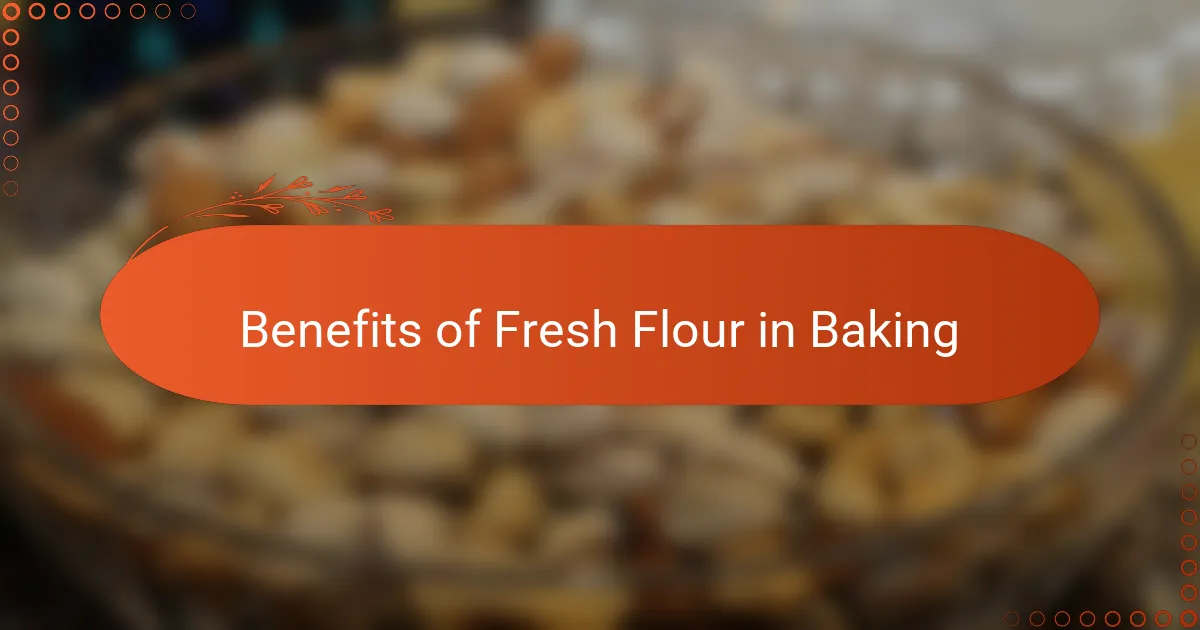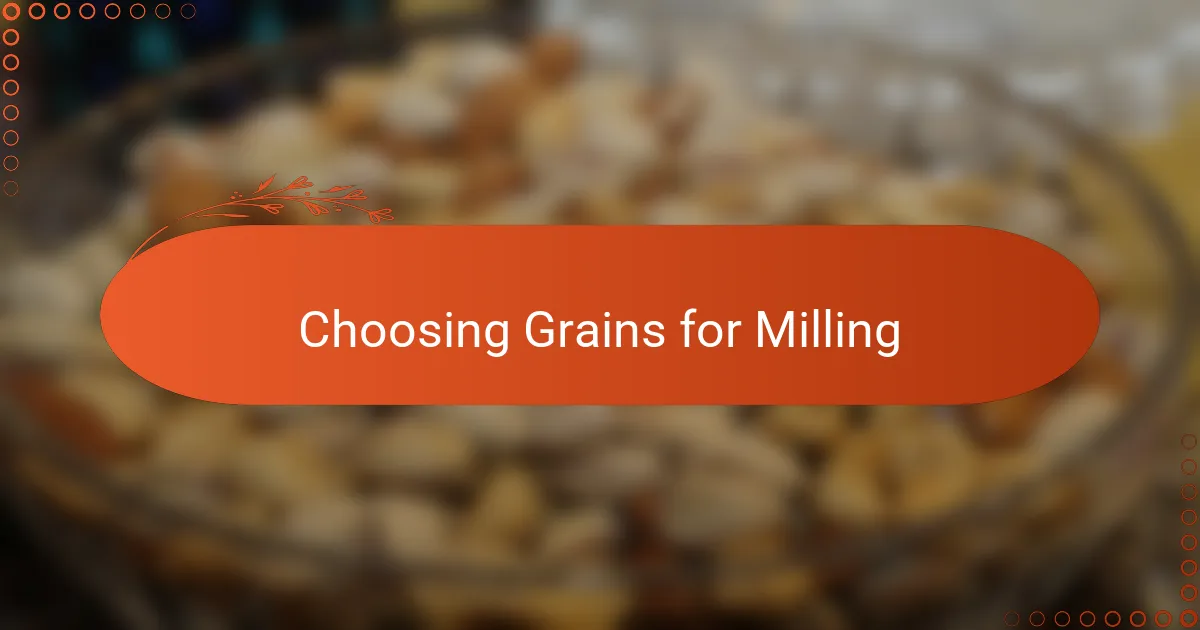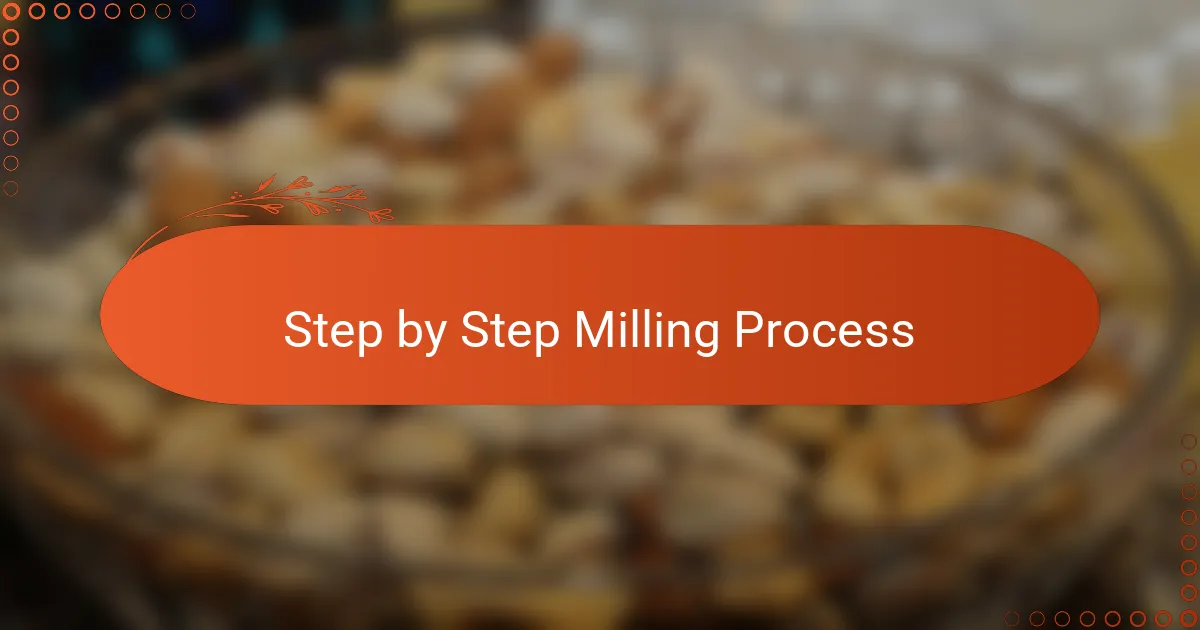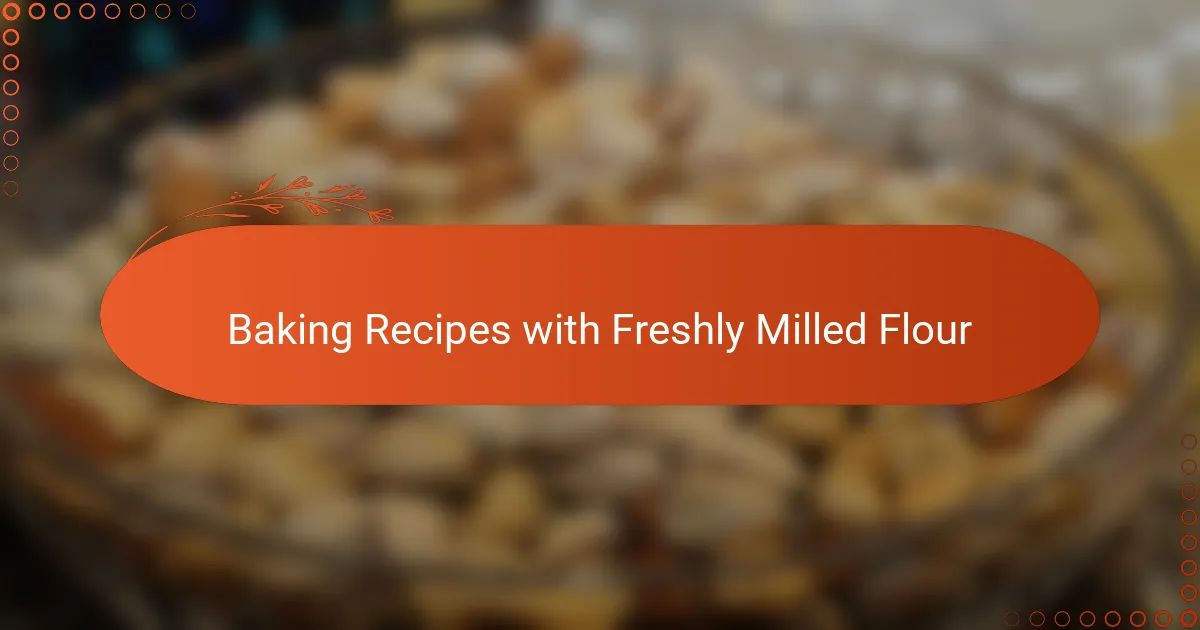Key takeaways
- Freshly milled flour retains bran and germ, enhancing flavor and nutritional value compared to store-bought flour.
- Investing in quality milling equipment and proper grain storage is crucial to achieving optimal flour texture and flavor.
- Choosing grains like hard red wheat and heirloom varieties can add unique flavors and complexity to baked goods.
- Experimenting with recipes using freshly milled flour leads to improved taste and texture, encouraging a hands-on baking experience.

Understanding Freshly Milled Flour
Freshly milled flour is a game-changer in the kitchen, and I quickly learned that it’s so much more than just pulverized grains. Unlike store-bought flour, it retains the bran and germ, which means it’s packed with vitamins, minerals, and natural oils that add depth and flavor. Have you ever noticed how some breads just seem to have that rich, nutty taste? That’s the freshly milled flour working its magic.
When I first ground my own grains, I was amazed at how different the texture felt—coarser, warmer, and alive in a way. It needs to be used quickly because the natural oils can go rancid, and this fleeting freshness adds a sense of urgency and excitement to baking. Isn’t it fascinating how something so simple can demand patience and precision?
In my experience, understanding freshly milled flour means appreciating the whole grain in its purest form and embracing the little imperfections that make each batch unique. It’s like reconnecting with the roots of baking, where every loaf reflects the care and attention put into grinding. Don’t you feel a bit more connected to your food when you take this hands-on approach?

Benefits of Fresh Flour in Baking
One of the biggest benefits I noticed when baking with fresh flour is how much more flavorful everything tastes. You can really taste the difference—the natural oils and nutrients aren’t just for show; they bring a depth and richness that store-bought flour can’t match. Have you ever bitten into bread that left you craving more? That’s the fresh flour at work, delivering a nutty, robust flavor that feels like a warm hug from the inside.
Another thing that surprised me was how the texture of baked goods improved. Freshly milled flour gave my bread a beautiful crumb and a slight chewiness that felt so satisfying. It’s like the flour was alive, contributing to a texture that made each bite feel handcrafted and special. Don’t you love when something as simple as flour can transform your baking experience so much?
Lastly, there’s something deeply rewarding about baking with flour I’ve just milled myself—knowing it’s fresh gives me confidence that the nutrients are intact, and that the food I’m making is truly wholesome. It’s a small act, but it made me feel more connected to the process and proud of what I created. Isn’t that the kind of fulfillment we all look for in homesteading cooking?

Essential Equipment for Milling Flour
To start milling your own flour, the first essential piece of equipment I found indispensable was a quality grain mill. Whether manual or electric, having a reliable mill made all the difference—in fact, the texture and consistency of the flour depended greatly on the mill’s performance. Have you ever struggled with an inconsistent grind that left your dough unpredictable? I certainly have, and that experience taught me to prioritize a sturdy, adjustable mill.
Alongside the mill, I quickly realized the importance of having a good storage container to keep grains fresh before milling. In my kitchen, airtight jars became my best friends—they preserved the grains’ natural oils and protected them from moisture, which could easily ruin the flour’s quality. It’s a small but crucial step; after all, fresh flour starts with fresh grains, right?
Lastly, a fine sieve or flour sifter became a handy tool to separate any larger bran bits or husks after milling. At first, I thought it wasn’t necessary, but I soon noticed how sifting improved the texture of my dough and baked goods. Have you ever bitten into bread and felt a little too much crunch from coarse particles? A quick sift helps smooth that out, making every bite just right.

Choosing Grains for Milling
Selecting grains for milling felt like choosing ingredients for a secret recipe only I could create. I found that wheat, especially hard red wheat, is a favorite because it grinds well and offers a rich, hearty flavor perfect for bread. Have you ever wondered why some breads feel denser and more satisfying? That’s often the grain variety talking.
Then there are heirloom grains like spelt and rye, which I tried simply out of curiosity. Their unique flavors brought unexpected complexity to my baking, though they behave differently when milled. It made me realize how important it is to get to know each grain’s personality before diving in.
One thing I quickly learned is freshness matters not only in milling but in choosing grains themselves. Grains bought directly from trusted local farmers or organic suppliers held more life and aroma than those sitting on distant store shelves. Don’t you think that connection to the grain’s origin adds another layer of meaning to the baking process? For me, it certainly does.

Step by Step Milling Process
Starting the milling process, I first poured my chosen grains into the hopper, feeling a little thrill knowing this simple act was the beginning of something special. Setting the grind size was my next step—I favored a medium grind for most breads because it strikes a perfect balance between texture and moisture absorption. Have you ever fiddled with settings only to find the perfect consistency? That moment feels like tuning an instrument before a concert.
As the mill began to hum, I watched the fine dust flow out, warm and fragrant. It’s amazing how freshly milled flour still carries the heat of the process, a reminder that it’s alive and ready to bring life to dough. When I scoop it up and inhale that nutty aroma, it feels like I’m connecting directly to the earth—and that connection makes baking feel more intentional, don’t you think?
Once milling is done, I like to sift the flour gently to remove larger bran pieces, but never too much—I’m careful to preserve those nutritious bits that give the bread character. Waiting a moment to clean the mill and store the flour in an airtight container feels like a ritual; it protects the freshness and means I’m ready for the next baking adventure. Isn’t there something satisfying about seeing the whole process through with care?

Baking Recipes with Freshly Milled Flour
Baking with freshly milled flour brought a surprising twist to my favorite recipes. I noticed right away how my sourdough loaf developed a deeper flavor profile and a denser crumb—something store-bought flour rarely gave me. Have you ever experienced that moment when a simple ingredient change completely elevates your baking? That’s exactly what happened with fresh flour.
One time, I experimented with freshly milled whole wheat flour in a classic pancake recipe. The result was pancakes with a pleasantly nutty aroma and just the right fluffy texture. It made me realize how versatile freshly milled flour is—it doesn’t just work for bread but can enhance everything from muffins to cookies. Isn’t it exciting to think about all the ways this single change can brighten your baking?
I also found that adjusting recipes slightly is key because freshly milled flour absorbs liquids differently. It took a couple of tries to perfect my biscuit dough, but the added chewiness and aroma were well worth the effort. Have you ever tweaked a recipe and felt proud when it finally clicked? That’s the kind of hands-on satisfaction that comes with baking from scratch—and grinding your own flour only deepens that connection.



